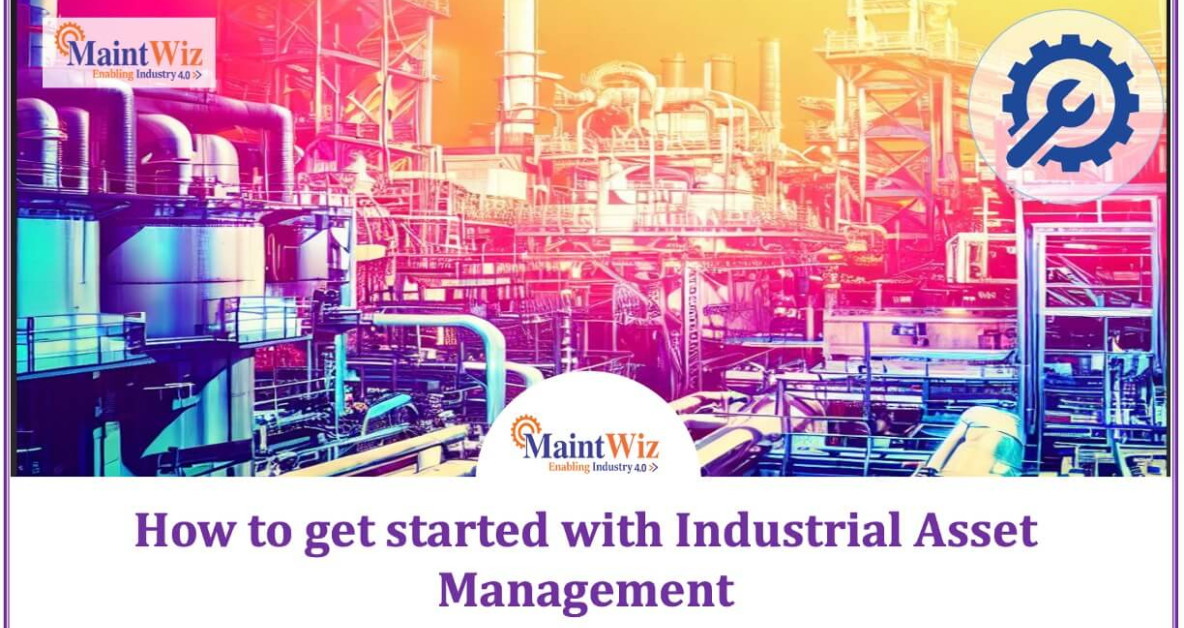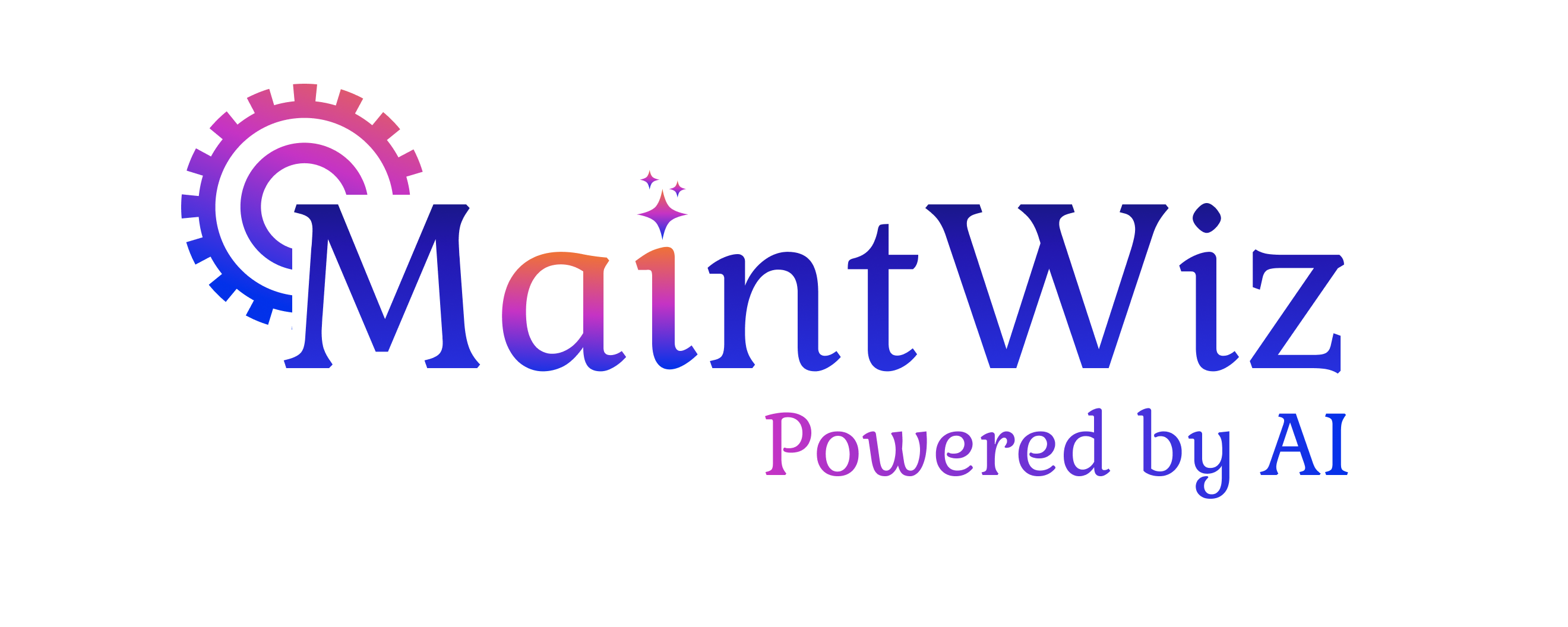
Welcome to the world of industrial asset management – a journey towards optimizing your organization’s assets for improved efficiency and profitability. In this guide, we’ll explore the key elements, benefits, and strategies for successful asset management in the manufacturing industry.
Table of Contents
Toggle1. Introduction to Industrial Asset Management
Industrial Asset Management involves the systematic management of an organization’s physical assets to enhance productivity and reduce operational risks. Effective asset management is crucial for the manufacturing sector.
Benefits of Effective Asset Management
- Improved Equipment Reliability
- Cost Savings and Efficiency Gains
- Compliance and Risk Mitigation
Efficient industrial asset management is the backbone of any successful manufacturing operation. It involves the strategic management of an organization’s physical assets to ensure they function optimally, are well-maintained, and contribute to increased productivity and profitability.
In this comprehensive guide, we will delve into the various aspects of industrial asset management, providing insights, strategies, and best practices to help your organization get started on the path to excellence.
2. Key Elements of Industrial Asset Management
Before diving into the practical steps of implementing industrial asset management, it’s essential to understand its key elements:
Asset Inventory and Documentation
At the core of effective asset management is having a clear and up-to-date inventory of all your assets. This includes detailed documentation of each asset, including specifications, maintenance history, and relevant documents. An accurate inventory serves as the foundation for making informed decisions about asset maintenance, repairs, and replacements.
Maintenance Strategies and Plans
Successful asset management requires well-defined maintenance strategies and plans. This involves determining the most suitable maintenance approach for each asset, whether it’s a proactive preventive maintenance plan or a more reactive approach for certain assets. Developing comprehensive maintenance plans ensures that assets receive the right care at the right time, reducing downtime and extending their lifespan.
Data and Analytics
Data plays a crucial role in asset management. Collecting and analyzing data from various sources, including sensors, IoT devices, and historical records, enables organizations to gain insights into asset performance and health. Data-driven analytics help in predicting potential issues, optimizing maintenance schedules, and making informed decisions regarding asset investments.
Now that we’ve covered the fundamental elements, let’s explore the practical steps to kickstart your industrial asset management journey.
3. Getting Organized for Asset Management
Efficient asset management requires a well-organized approach:
Setting Clear Goals and Objectives
The first step is defining your asset management goals and objectives. What do you aim to achieve with your assets, and how do these goals align with your organization’s broader mission and strategy? Setting clear objectives provides direction and purpose to your asset management efforts.
Assembling the Asset Management Team
Achieving successful asset management is a team effort. Assemble a dedicated team with the right skills and expertise. This team may include maintenance managers, reliability engineers, data analysts, and technicians. Collaborative teamwork ensures that asset management strategies are implemented effectively and consistently.
Allocating Resources
Allocate the necessary resources to support your asset management initiatives. This includes budget allocation for technology, maintenance activities, training, and any other requirements. Adequate resource allocation demonstrates your organization’s commitment to optimizing asset performance.
4. Selecting the Right Asset Management Software
Choosing the right software is a critical decision:
Types of Asset Management Software
There are various types of asset management software available, including Computerized Maintenance Management Systems (CMMS), Enterprise Asset Management (EAM) systems, and specialized IoT platforms. Consider your organization’s specific needs and choose the software that aligns with your objectives.
Considerations for Software Selection
When selecting asset management software, consider factors such as scalability, features, integration capabilities, user-friendliness, and vendor support. The chosen software should seamlessly integrate with your existing systems and processes.
Case Studies on Software Implementation
Explore real-world case studies of organizations that have successfully implemented asset management software. These case studies provide valuable insights into the benefits and challenges of software adoption.
With your team in place and the right software selected, you’re ready to move on to the next crucial step: data collection and asset tracking.
5. Data Collection and Asset Tracking
Effective asset management relies on accurate data:
Importance of Data in Asset Management
Data serves as the lifeblood of asset management. It provides the insights necessary to make informed decisions about asset maintenance, repair, and replacement. Ensure that data collection processes are in place and that data quality is maintained.
Implementing IoT and Sensors
The Internet of Things (IoT) and sensor technologies have revolutionized asset management. These technologies enable real-time monitoring of asset performance, allowing for proactive maintenance and early issue detection.
Real-time Asset Tracking Solutions
Explore real-time asset tracking solutions that provide visibility into the location and status of your assets. These solutions enhance asset security and help optimize asset utilization.
Now that you have a strong foundation in place, it’s time to delve into the strategies for proactive maintenance.
6. Implementing Preventive Maintenance
Preventive maintenance is a cornerstone of effective asset management:
Preventive vs. Reactive Maintenance
Understand the difference between preventive and reactive maintenance approaches. While reactive maintenance addresses issues as they arise, preventive maintenance aims to prevent problems before they occur. The latter is more cost-effective and minimizes downtime.
Developing Preventive Maintenance Plans
Create comprehensive preventive maintenance plans tailored to your assets’ specific needs. These plans include scheduled inspections, routine maintenance tasks, and asset health assessments.
Benefits of Predictive Maintenance
Explore the benefits of predictive maintenance, which uses data analytics and predictive modeling to forecast asset failures. Predictive maintenance minimizes unplanned downtime and reduces maintenance costs.
Your journey towards industrial asset management excellence continues with a focus on asset lifecycle management.
7. Asset Lifecycle Management
Understanding asset lifecycles is essential:
Understanding Asset Lifecycles
Assets have finite lifespans. Understanding these lifecycles helps in planning for asset replacements and upgrades. It ensures that assets remain aligned with your organization’s evolving needs.
Planning for Asset Replacement and Upgrades
Develop strategies for asset replacement and upgrades based on their lifecycle stages and performance. This proactive approach prevents unexpected failures and ensures asset reliability.
Extending Asset Lifespan
Implement practices to extend asset lifespan, such as regular maintenance, upgrades, and refurbishments. Maximizing asset longevity contributes to cost savings.
Measurement and continuous improvement are also crucial aspects of industrial asset management.
8. Measuring and Improving Asset Performance
Key performance indicators (KPIs) are your guiding metrics:
Key Performance Indicators (KPIs) in Asset Management
Identify and track KPIs that align with your asset management goals. Common KPIs include asset uptime, maintenance cost, Mean Time to Repair (MTTR), and Overall Equipment Efficiency (OEE).
Continuous Improvement Strategies
Embrace a culture of continuous improvement. Regularly review asset management processes, analyze KPI data, and seek opportunities to enhance asset performance.
Case Studies on Performance Improvement
Learn from organizations that have successfully improved asset performance. Case studies offer practical insights into achieving tangible results.
Ensuring compliance with industry regulations is another critical consideration.
9. Compliance and Regulatory Considerations
Compliance is essential in regulated industries:
Industry-specific Regulations
Understand the specific regulations governing your industry. Compliance ensures safety, quality, and adherence to legal requirements.
Ensuring Compliance with Asset Management
Integrate compliance requirements into your asset management practices. This includes documentation, reporting, and audit processes.
Auditing and Reporting
Regularly audit and report on your asset management activities to demonstrate compliance and identify areas for improvement.
10. Conclusion
Effective industrial asset management is the key to unlocking operational efficiency, cost savings, and long-term sustainability. By implementing the strategies and best practices outlined in this guide, your organization can embark on a successful asset management journey.
Key Takeaways:
- Start with a clear understanding of industrial asset management.
- Benefits include improved reliability, cost savings, and compliance.
- Key elements involve clear goals, skilled teams, and resource allocation.
- Choosing the right asset management software is essential.
- Data collection and tracking are vital for data-driven decisions.
- Preventive maintenance is crucial for cost-effective operations.
- Understand asset lifecycles for effective planning.
- Measure and improve asset performance with KPIs.
- Compliance with industry regulations is non-negotiable.
Call to Action
Ready to optimize your industrial asset management? Explore how MaintWiz CMMS can help your organization streamline operations and maximize asset performance.

Jai Balachandran is an industry expert with a proven track record in driving digital transformation and Industry 4.0 technologies. With a rich background in asset management, plant maintenance, connected systems, TPM and reliability initiatives, he brings unparalleled insight and delivery excellence to Plant Operations.
Recent Posts
- From Chaos to Order: Simplifying Maintenance Management with Technology
- From Crisis to Control:Regaining Stability with Effective Breakdown Response
- Avoiding Pitfalls: The 7 Biggest Mistakes Plant Managers Make in Maintenance
- Quality Matters: Improve OEE by Reducing Defects and Rework with MaintWiz CMMS
- How to Implement an Effective Lubrication Program for Your Plant Maintenance Strategy
Recent Comments
Company




